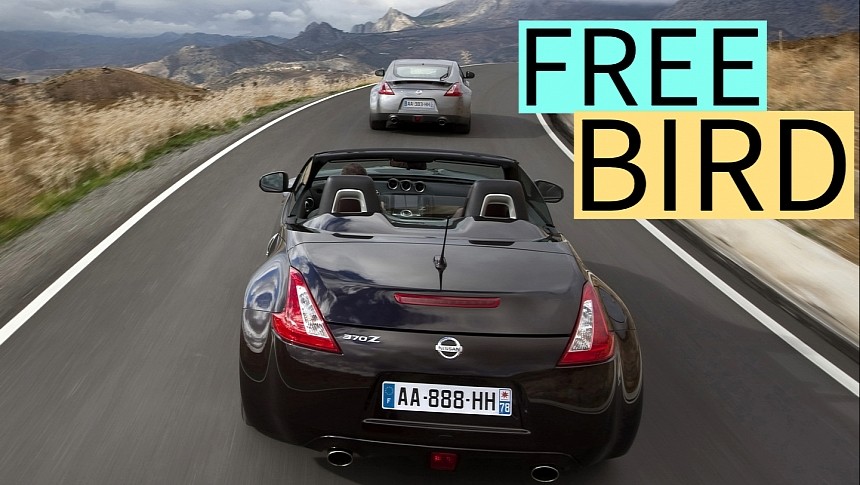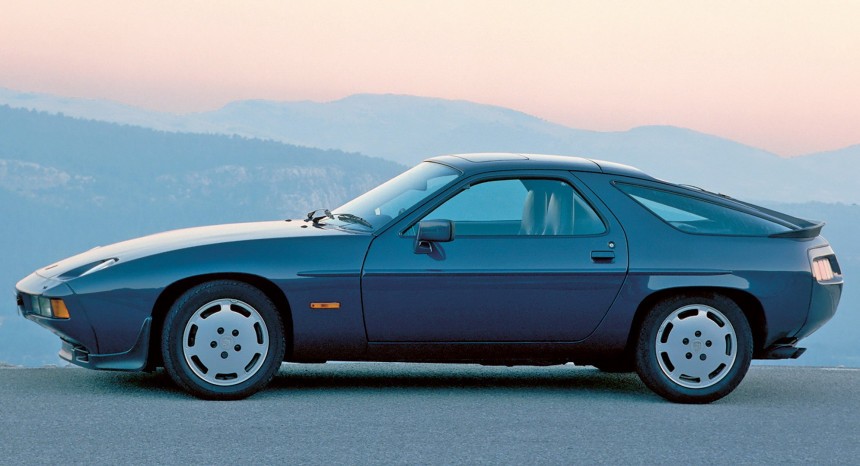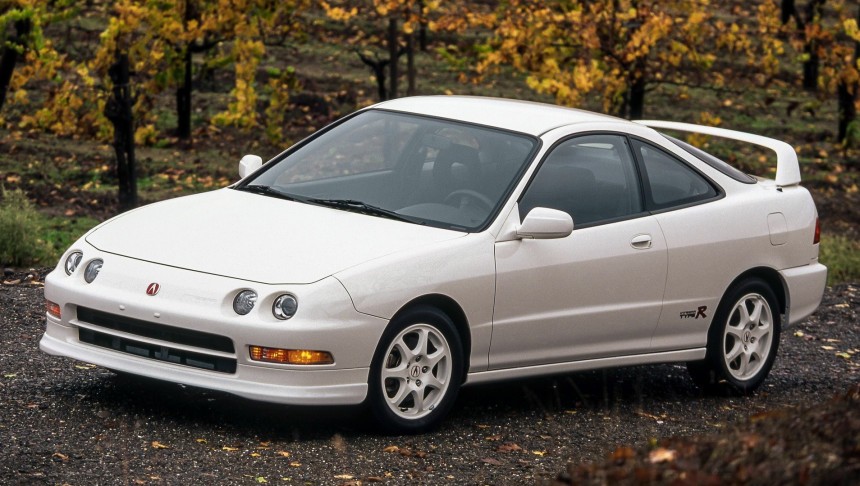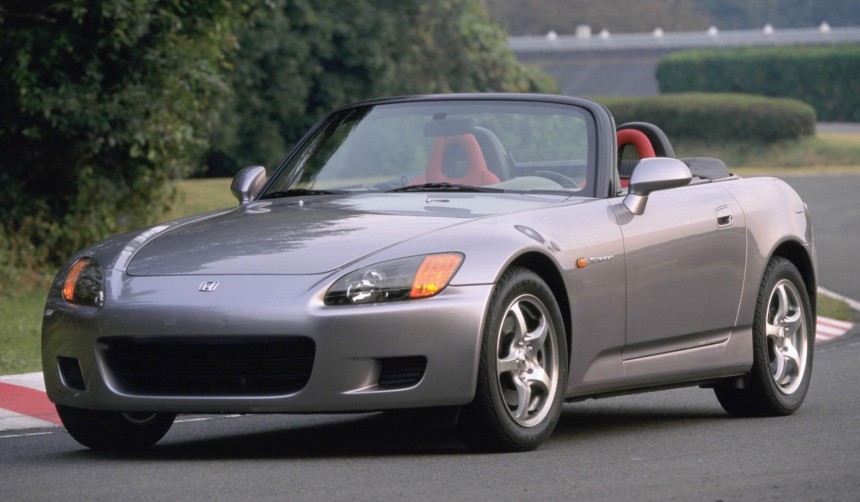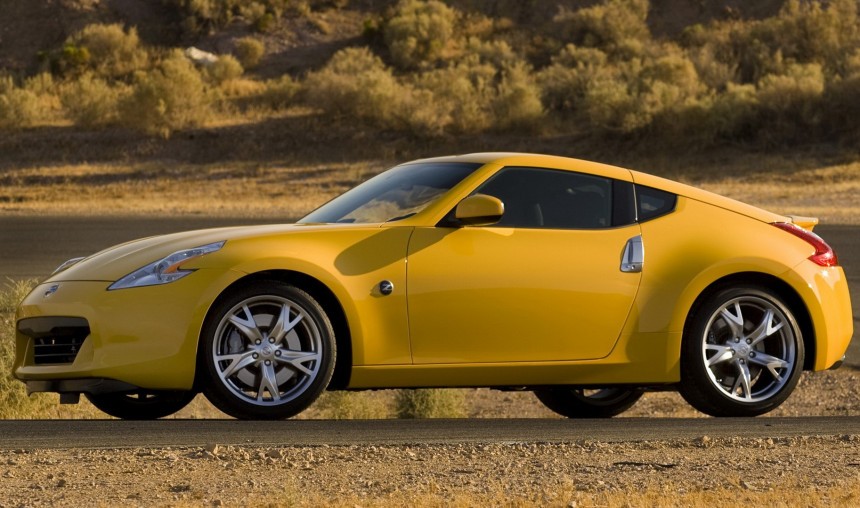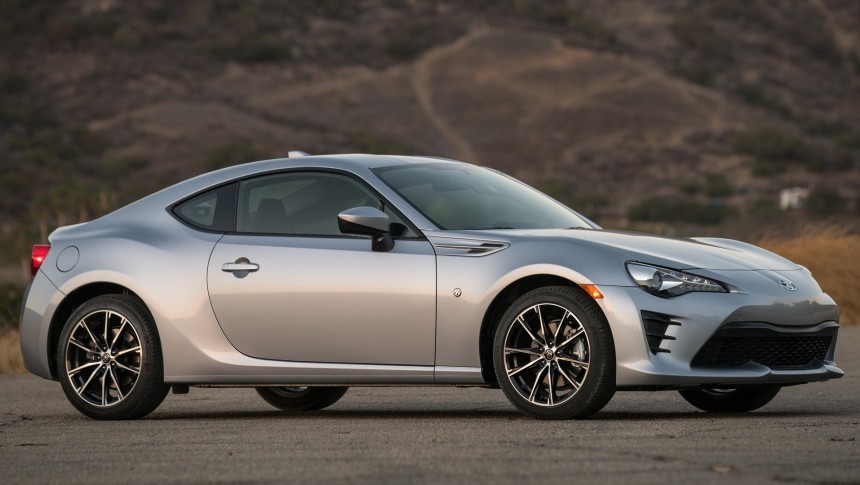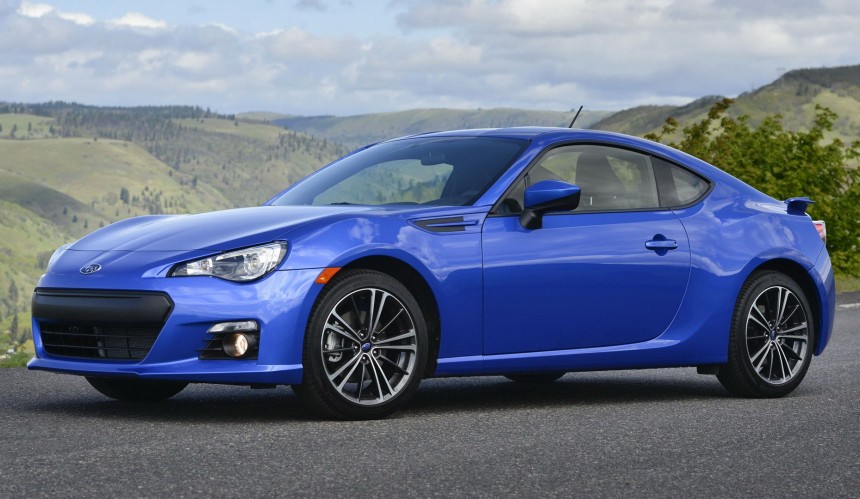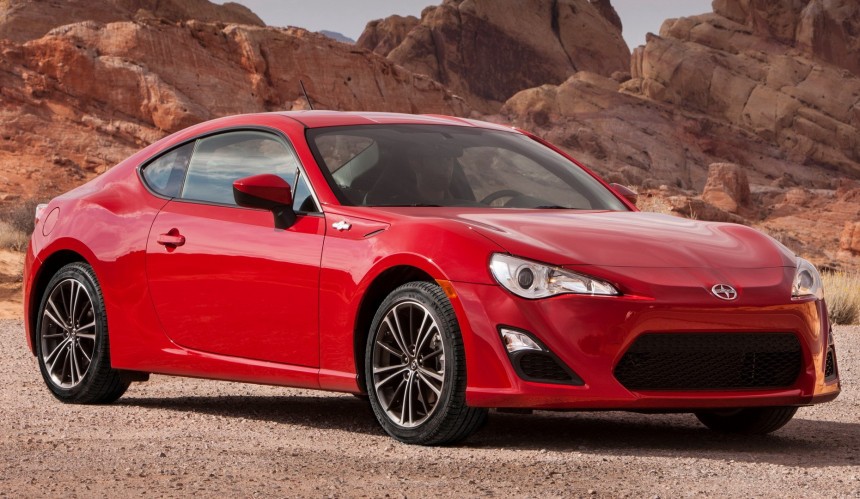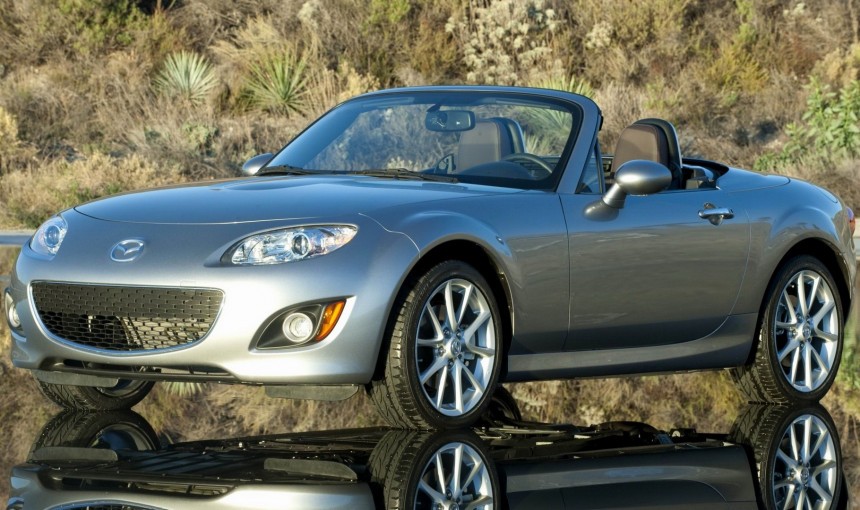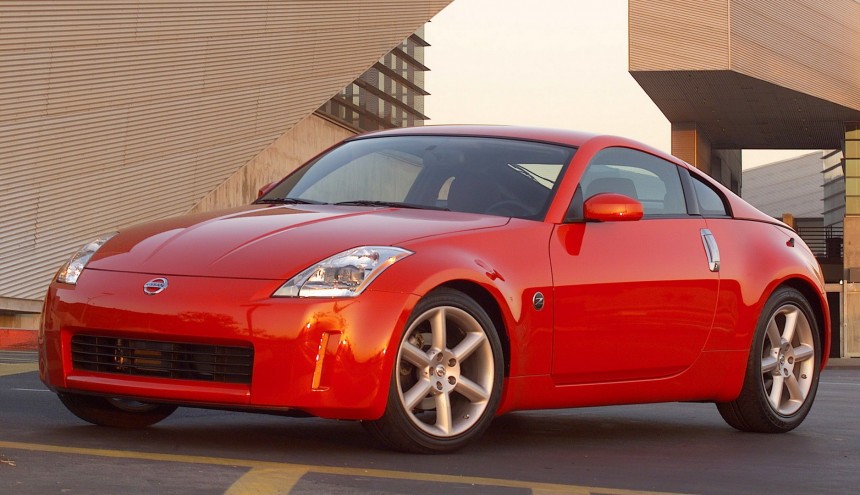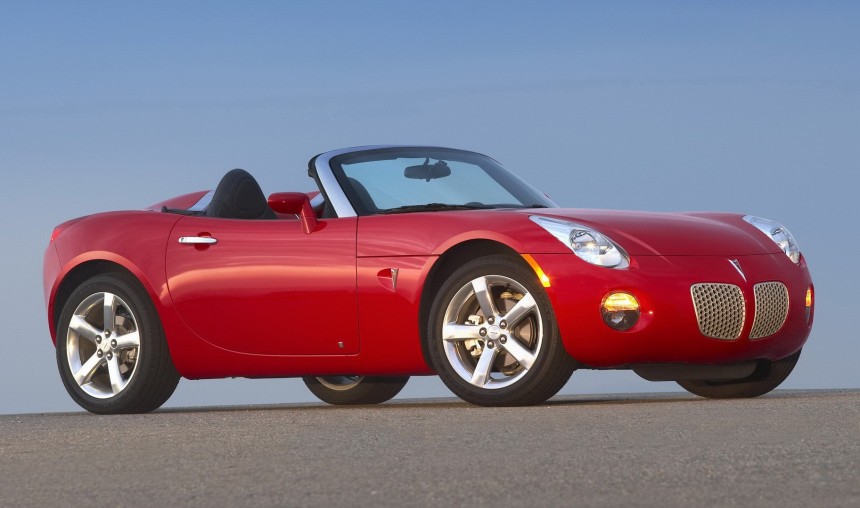Sports cars are some of the most appealing types of passenger cars money can buy. You’re never too young and never too old to drive one. They represent freedom out on the open road and based on your budget, there are loads of options to choose from.
Still, today we’ll be looking at a particular type of sports car, one that is both reliable and affordable, and in order to mix and match the two, we need to take a long hard look at the big picture.
There are the rules: We can consider older models, absolutely, but nothing that’s way too ancient so as to avoid major wear issues. We won’t be including any brand-new MY2023/24 cars, because their reliability hasn’t truly been gauged. We’ll also look at MSRP when new and what they cost now on the used car market, because the law of averages is the great equalizer.
As for how we’re determining the actual rankings, we’ll be looking at reliability scores (when available), as well as various online forums to determine ownership costs courtesy of actual owners. Finally, we’ll add personal experience to the mix and voilà.
So, without further ado, these are our Top 10 picks for most reliable and affordable sports cars of all time, and as always, we’ll be counting down to no.1.
I bet you thought that if any Porsche was going to make our list, it would be a 718 Cayman or maybe the first-generation Boxster, but no way friends. We can’t stretch the meaning of the word ‘affordable’ until it becomes twisted.
Also, those first-gen Boxsters weren’t known for their reliability and would often require unforeseen repairs. The newer they get, the more reliable they are, yes, but pricing and maintenance costs remain high. Today, it will cost you upwards of $68,000 to purchase a new 718 Cayman, and they don’t get much cheaper than that.
Now, the 928 is a whole different animal, after all, these were Porsche’s first-ever production V8-powered cars.
Even when new, and even when we adjust for inflation, an entry-level 928 would have cost the equivalent of $50,000 in today’s currency and while that’s still kind of pricey, we take solace in the fact that used ones can be had for as little as $15,000 - $20,000 today, depending on their condition.
Also, unlike the Boxster, the 928 was known as a reliable vehicle, so when we couple that with what it would cost to purchase one today, we end up with a sports car worthy of this fastidious Top 10.
Here’s an obvious tip though. If you’re genuinely going to get one today, unless you’re looking for a project car, don’t buy the cheapest one you can find.
In stark contrast to the Porsche 928, the Acura Integra Type R, more specifically the third-generation model, was rather affordable as new, yet now costs a pretty penny used.
Still, those who did manage to snatch one under MSRP should consider themselves really lucky. Adjusted for inflation, people would pay upwards of $30,000 for these. In return, you got a liftback Integra with a 1.8-liter DOHC VTEC four-cylinder engine, good for 195 horsepower and 130 lb-ft of torque. These Acuras also came with a limited-slip differential, special badging, a larger rear wing, unique trim and a lowered suspension, and you could clock them at a little over 6 seconds when accelerating to 60 mph. The Integra Type R would require about 14.5 seconds to cover a quarter mile, which was pretty good.
Generally speaking, the Integra Type R is widely regarded as one of the best sports cars of the 1990s, and you could easily have fun driving one even today. Unfortunately, finding a nice low-mileage example on the used market could cost you an arm and a leg. Some will go for as much as $80,000, and if you want something truly pristine, you could end up paying even more.
Any hardcore driving enthusiast will tell you that the Honda S2000 belongs on some type of pedestal, and frankly, they would not be wrong.
This is a front-mid engine roadster with rear-wheel-drive, exquisite driving dynamics and a 9,000 rpm redline. If you care about driving in its purest form, you genuinely cannot do much better than the S2000, especially on a budget.
These things used to cost a little over $30,000 when new, and you can get a decent one today for about $15,000, so as far as we’re concerned, you’re looking at a hell of a bargain.
While Honda killed off production back in 2009, nearly 90 more units were sold in the U.S. in the following two years based on residual inventory. Their best-ever year in the U.S. was 2002, when they sold 9,684 units.
Sure, those numbers are nothing compared to what Mazda has achieved throughout the years with the MX-5 Miata, but if you compare the two directly (identical model years and all that), it’s the Honda that always seems to come out on top – superior power, better gearbox, more thrills. That being said, the MX-5 Miata is the more affordable product from pretty much all standpoints.
Also known as the Fairlady Z in Japan, the Nissan 370Z stands as the successor to the 350Z and the last ever production car with a naturally aspirated high-revving V6, coupled with a manual gearbox.
People think these are nothing more than updated 350Z models, but they’re wrong. The 370Z offers a “tighter” package, with a smaller wheelbase, less height and overall length, but more width. It’s also stiffer than the 350Z, and more pleasant to drive.
Speaking of ways in which this is better than its predecessor – you can add on-board tech to the list, which includes active safety systems. Since the last-ever 370Z rolled off the production line in 2021, it’s easy to understand why these sports cars aren’t thought of as being obsolete.
Still, the fact remains that buying one new would have been more expensive than buying a new 350Z back in the day. Not by much, but just enough. They’re also more expensive on the used car market, as opposed to their predecessor – and this difference is less negligible. It’s hard to find a good 370Z for way under $20,000, whereas a nice 350Z can be had for less than $15,000.
Overall, they’re both very reliable and sufficiently affordable, but it’s the 350Z that’s getting ranked higher on this list.
The Toyota 86 and its twin, the Subaru BRZ, were introduced to the world back in 2012 as affordable 2-door fastback coupe sports cars. The ‘86’ didn’t reach U.S. shores until 2016, which is how we ended up with the Scion FR-S... yet another clone.
All three cars are worthy of our list (86/BRZ/FR-S), and we’ve ranked them all back-to-back, using very simple metrics. The Toyota was the most expensive of the bunch (both new and used), which is why we can’t rank it higher than no. 6.
Their starting MSRP was roughly $27,000, and you can grab a used one today for around $22,000 – those are some really good residuals, by the way. So, if you care about residual value most, the Toyota should hold its own a little better than the Subaru or the now defunct Scion.
Of course, all of these were really good cars – fun to drive, dependable and affordable. The straight-line performance maybe wasn’t what some buyers were expecting, but it certainly wasn’t bad either. Roughly 200 horsepower courtesy of a 2.0-liter naturally aspirated four-cylinder unit in a car that weighed just 2,600 lbs? How can you go wrong?
Still, some people were hoping these could keep up with various base-spec muscle cars and generally speaking, they couldn’t.
Ranking the first-generation BRZ ahead of the Toyota 86 is as simple as looking at their figures. The Scooby was cheaper to purchase (new and used) and just as reliable. Again, we’re dealing with identical cars, to the point where I might as well copy paste most of what I just said about the ‘86’ onto the following paragraphs. Sadly, that would get frowned upon.
What some people don’t like as much, with regards to the BRZ, is the styling. Yes, yes, nearly identical, I know. But there are subtle differences to the point where the Toyota does seem a little bit more aggressive looking.
I mean, check out the BRZ’s hexagonal grille, as opposed to the Toyota’s trapezoidal one. The latter matches the front fascia a little better. I also prefer the bumper design on the Toyota, which integrates the fog lights in a more dynamic fashion.
I’ll admit, I think a lot of us (industry experts and analysts) were skeptical when we heard about this little sports car joint venture between Toyota and Subaru, but as long as your expectations regarding dynamic driving aren’t too extreme, you should be quite thrilled to own either of the two – unless you were literally super early to the party and went with what was behind door no.3, the Scion.
Before Toyota decided to bring the 86 to the U.S. (that’s before it got renamed GT86 and way before this latest GR86 came to be), you could get it as a Scion model nationwide. Toyota considered Scion a more youth-oriented brand, hence this slightly curious decision.
Anyway, enter the Scion FR-S (Front-engine, Rear-wheel drive and Sport) with its single standard specification and fixed price. The only options you could get on an FR-S had to do with the exterior color and your choice of transmission, although later on, Scion did sell a few special edition variants with extra equipment and exclusive visuals.
It was cheaper than the Subaru BRZ by about one grand at retail, and what’s funny is that they’re still cheaper on the used market ($18k vs. $19k), when comparing similar specifications.
For those reasons alone, we’re ranking it higher than its two siblings, since it was more affordable and just as reliable.
As for how its looks compare to those of the Subaru or those newer Toyota iterations, the FR-S obviously mirrored the Toyota in that department, so the case could be made for it looking a little better than the BRZ. All in all, we’re satisfied with having the FR-S all the way up at no.3 on this list.
Sports cars don’t get a lot more iconic than the Mazda MX-5 Miata, especially when it comes to affordability. The whole idea of buying an MX-5 is spending twice as little as what you’d spend on something like a BMW Z4, while having nearly as much fun.
Today, a Z4 would set you back a minimum of $53,600, in return for which you get a 255-horsepower turbocharged four-cylinder unit. That’s plenty good for a zero to 60 time of 5.2 seconds.
On the other hand, a base-spec MX-5 ($28,000) is content with a 181 horsepower 2.0-liter four-cylinder engine, but since the car weighs less, it’s only slower than the Z4 by about half a second, maybe a little more. Anyway, it’s great value for money, and it’s supremely affordable and reliable. Even the flagship spec RF model makes for a great deal.
If you’re buying used, you can go as low as $10,000 for a nice second-generation model. Even the early third-gen cars are dirt cheap. Speaking of which, if you don’t mind early first-gen variants (NA), you only need to part with a few thousand dollars, but I wouldn’t necessarily recommend those simply because they are way too slow to feel sporty by 2023 standards.
The Nissan 350Z is a trend-setting sports car, and a bit of a cultural icon among driving enthusiasts. It was never the best car in its class, but it otherwise did everything just right.
In fact, this was such a driver’s car that initial base-spec models didn’t even come with traction control or cruise control. What they did have was power, and plenty of it... for a two-seater sports car that only cost $28,000 when new.
Its 3.5-liter V6 engine was good for 287 horsepower and 274 lb-ft of torque, with later variants (2007-2009) raising the output to 306 horsepower and 268 lb-ft of torque. Whichever model-year you go for, you should be happy with the performance. You’ll also be happy with the price, as you can get a decent one today for a little over $10,000.
As for reliability, there shouldn’t be any major concerns. The 350Z is pretty resilient, and it’s also a great purchase for people who want a project car in which to inject a lot of horsepower.
To be frank, we could have easily gone with the 350Z at no.1 on this list. However, the car that did get the top spot turned out to be convincingly cheaper, albeit not better.
I know you guys didn’t see this one coming, right? I bet most of you hated the Pontiac Solstice and for good reason. They were poorly built (quality-wise), arguably slow (yet somewhat sporty), supremely impractical and prone to rust.
That being said, they were fun, dependable and inexpensive, to the point where you really couldn’t do much better value-wise if all you wanted was a brand-new cheap sports car. The Solstice used to cost around $24,000 MSRP, and you can get one right now for under $10,000.
I wouldn’t necessarily recommend it, but again, we’re focusing on vehicles that were reliable and affordable, and not necessarily the best at anything – the Solstice was hardly in a position to scare off its rivals from Nissan or Mazda.
Powering these GM-built roadsters was a naturally aspirated 2.4-liter four-cylinder engine, good for 177 horsepower and 166 lb-ft of torque. These were the early models (2004-2006). Afterwards, the Solstice was blessed with a 260 horsepower 2.0-liter turbocharged unit, which also had 260 lb-ft of torque. Those were much better to drive, accelerating to 60 mph in about 5.5 seconds.
You could get the Solstice as either a 2-door coupe or a roadster, and I would recommend you get the roadster if you absolutely must have one. I actually drove one a long, long time ago, and found it (gulp) acceptable.
Also, no, muscle cars aren’t sports cars, so that’s why no Mustangs or Camaros. Definitely no Challengers. I did consider the Corvette at one point, instead of the Porsche 928, but I felt that Porsche pick was way out of left field, which made it more interesting.
There are the rules: We can consider older models, absolutely, but nothing that’s way too ancient so as to avoid major wear issues. We won’t be including any brand-new MY2023/24 cars, because their reliability hasn’t truly been gauged. We’ll also look at MSRP when new and what they cost now on the used car market, because the law of averages is the great equalizer.
As for how we’re determining the actual rankings, we’ll be looking at reliability scores (when available), as well as various online forums to determine ownership costs courtesy of actual owners. Finally, we’ll add personal experience to the mix and voilà.
So, without further ado, these are our Top 10 picks for most reliable and affordable sports cars of all time, and as always, we’ll be counting down to no.1.
#10. Porsche 928
Also, those first-gen Boxsters weren’t known for their reliability and would often require unforeseen repairs. The newer they get, the more reliable they are, yes, but pricing and maintenance costs remain high. Today, it will cost you upwards of $68,000 to purchase a new 718 Cayman, and they don’t get much cheaper than that.
Now, the 928 is a whole different animal, after all, these were Porsche’s first-ever production V8-powered cars.
Even when new, and even when we adjust for inflation, an entry-level 928 would have cost the equivalent of $50,000 in today’s currency and while that’s still kind of pricey, we take solace in the fact that used ones can be had for as little as $15,000 - $20,000 today, depending on their condition.
Also, unlike the Boxster, the 928 was known as a reliable vehicle, so when we couple that with what it would cost to purchase one today, we end up with a sports car worthy of this fastidious Top 10.
Here’s an obvious tip though. If you’re genuinely going to get one today, unless you’re looking for a project car, don’t buy the cheapest one you can find.
#9. Acura Integra Type R
Still, those who did manage to snatch one under MSRP should consider themselves really lucky. Adjusted for inflation, people would pay upwards of $30,000 for these. In return, you got a liftback Integra with a 1.8-liter DOHC VTEC four-cylinder engine, good for 195 horsepower and 130 lb-ft of torque. These Acuras also came with a limited-slip differential, special badging, a larger rear wing, unique trim and a lowered suspension, and you could clock them at a little over 6 seconds when accelerating to 60 mph. The Integra Type R would require about 14.5 seconds to cover a quarter mile, which was pretty good.
Generally speaking, the Integra Type R is widely regarded as one of the best sports cars of the 1990s, and you could easily have fun driving one even today. Unfortunately, finding a nice low-mileage example on the used market could cost you an arm and a leg. Some will go for as much as $80,000, and if you want something truly pristine, you could end up paying even more.
#8. Honda S2000
This is a front-mid engine roadster with rear-wheel-drive, exquisite driving dynamics and a 9,000 rpm redline. If you care about driving in its purest form, you genuinely cannot do much better than the S2000, especially on a budget.
These things used to cost a little over $30,000 when new, and you can get a decent one today for about $15,000, so as far as we’re concerned, you’re looking at a hell of a bargain.
While Honda killed off production back in 2009, nearly 90 more units were sold in the U.S. in the following two years based on residual inventory. Their best-ever year in the U.S. was 2002, when they sold 9,684 units.
Sure, those numbers are nothing compared to what Mazda has achieved throughout the years with the MX-5 Miata, but if you compare the two directly (identical model years and all that), it’s the Honda that always seems to come out on top – superior power, better gearbox, more thrills. That being said, the MX-5 Miata is the more affordable product from pretty much all standpoints.
#7. Nissan 370Z
People think these are nothing more than updated 350Z models, but they’re wrong. The 370Z offers a “tighter” package, with a smaller wheelbase, less height and overall length, but more width. It’s also stiffer than the 350Z, and more pleasant to drive.
Speaking of ways in which this is better than its predecessor – you can add on-board tech to the list, which includes active safety systems. Since the last-ever 370Z rolled off the production line in 2021, it’s easy to understand why these sports cars aren’t thought of as being obsolete.
Still, the fact remains that buying one new would have been more expensive than buying a new 350Z back in the day. Not by much, but just enough. They’re also more expensive on the used car market, as opposed to their predecessor – and this difference is less negligible. It’s hard to find a good 370Z for way under $20,000, whereas a nice 350Z can be had for less than $15,000.
Overall, they’re both very reliable and sufficiently affordable, but it’s the 350Z that’s getting ranked higher on this list.
#6. Toyota 86
All three cars are worthy of our list (86/BRZ/FR-S), and we’ve ranked them all back-to-back, using very simple metrics. The Toyota was the most expensive of the bunch (both new and used), which is why we can’t rank it higher than no. 6.
Their starting MSRP was roughly $27,000, and you can grab a used one today for around $22,000 – those are some really good residuals, by the way. So, if you care about residual value most, the Toyota should hold its own a little better than the Subaru or the now defunct Scion.
Of course, all of these were really good cars – fun to drive, dependable and affordable. The straight-line performance maybe wasn’t what some buyers were expecting, but it certainly wasn’t bad either. Roughly 200 horsepower courtesy of a 2.0-liter naturally aspirated four-cylinder unit in a car that weighed just 2,600 lbs? How can you go wrong?
Still, some people were hoping these could keep up with various base-spec muscle cars and generally speaking, they couldn’t.
#5. Subaru BRZ
What some people don’t like as much, with regards to the BRZ, is the styling. Yes, yes, nearly identical, I know. But there are subtle differences to the point where the Toyota does seem a little bit more aggressive looking.
I mean, check out the BRZ’s hexagonal grille, as opposed to the Toyota’s trapezoidal one. The latter matches the front fascia a little better. I also prefer the bumper design on the Toyota, which integrates the fog lights in a more dynamic fashion.
I’ll admit, I think a lot of us (industry experts and analysts) were skeptical when we heard about this little sports car joint venture between Toyota and Subaru, but as long as your expectations regarding dynamic driving aren’t too extreme, you should be quite thrilled to own either of the two – unless you were literally super early to the party and went with what was behind door no.3, the Scion.
#4. Scion FR-S
Anyway, enter the Scion FR-S (Front-engine, Rear-wheel drive and Sport) with its single standard specification and fixed price. The only options you could get on an FR-S had to do with the exterior color and your choice of transmission, although later on, Scion did sell a few special edition variants with extra equipment and exclusive visuals.
It was cheaper than the Subaru BRZ by about one grand at retail, and what’s funny is that they’re still cheaper on the used market ($18k vs. $19k), when comparing similar specifications.
For those reasons alone, we’re ranking it higher than its two siblings, since it was more affordable and just as reliable.
As for how its looks compare to those of the Subaru or those newer Toyota iterations, the FR-S obviously mirrored the Toyota in that department, so the case could be made for it looking a little better than the BRZ. All in all, we’re satisfied with having the FR-S all the way up at no.3 on this list.
#3. Mazda MX-5 Miata
Today, a Z4 would set you back a minimum of $53,600, in return for which you get a 255-horsepower turbocharged four-cylinder unit. That’s plenty good for a zero to 60 time of 5.2 seconds.
On the other hand, a base-spec MX-5 ($28,000) is content with a 181 horsepower 2.0-liter four-cylinder engine, but since the car weighs less, it’s only slower than the Z4 by about half a second, maybe a little more. Anyway, it’s great value for money, and it’s supremely affordable and reliable. Even the flagship spec RF model makes for a great deal.
If you’re buying used, you can go as low as $10,000 for a nice second-generation model. Even the early third-gen cars are dirt cheap. Speaking of which, if you don’t mind early first-gen variants (NA), you only need to part with a few thousand dollars, but I wouldn’t necessarily recommend those simply because they are way too slow to feel sporty by 2023 standards.
#2. Nissan 350Z
In fact, this was such a driver’s car that initial base-spec models didn’t even come with traction control or cruise control. What they did have was power, and plenty of it... for a two-seater sports car that only cost $28,000 when new.
Its 3.5-liter V6 engine was good for 287 horsepower and 274 lb-ft of torque, with later variants (2007-2009) raising the output to 306 horsepower and 268 lb-ft of torque. Whichever model-year you go for, you should be happy with the performance. You’ll also be happy with the price, as you can get a decent one today for a little over $10,000.
As for reliability, there shouldn’t be any major concerns. The 350Z is pretty resilient, and it’s also a great purchase for people who want a project car in which to inject a lot of horsepower.
To be frank, we could have easily gone with the 350Z at no.1 on this list. However, the car that did get the top spot turned out to be convincingly cheaper, albeit not better.
#1. Pontiac Solstice
That being said, they were fun, dependable and inexpensive, to the point where you really couldn’t do much better value-wise if all you wanted was a brand-new cheap sports car. The Solstice used to cost around $24,000 MSRP, and you can get one right now for under $10,000.
I wouldn’t necessarily recommend it, but again, we’re focusing on vehicles that were reliable and affordable, and not necessarily the best at anything – the Solstice was hardly in a position to scare off its rivals from Nissan or Mazda.
Powering these GM-built roadsters was a naturally aspirated 2.4-liter four-cylinder engine, good for 177 horsepower and 166 lb-ft of torque. These were the early models (2004-2006). Afterwards, the Solstice was blessed with a 260 horsepower 2.0-liter turbocharged unit, which also had 260 lb-ft of torque. Those were much better to drive, accelerating to 60 mph in about 5.5 seconds.
You could get the Solstice as either a 2-door coupe or a roadster, and I would recommend you get the roadster if you absolutely must have one. I actually drove one a long, long time ago, and found it (gulp) acceptable.
No honorable mentions?
Nope. Sorry. I know some of you were expecting to see the BMW Z4, Porsche Boxster/Cayman or the Audi TT on this list, but those cars were by no means particularly affordable, especially nowadays. Certain generations were reliable, but the fact remains that you could have always done much better in terms of how much you spent.Also, no, muscle cars aren’t sports cars, so that’s why no Mustangs or Camaros. Definitely no Challengers. I did consider the Corvette at one point, instead of the Porsche 928, but I felt that Porsche pick was way out of left field, which made it more interesting.
